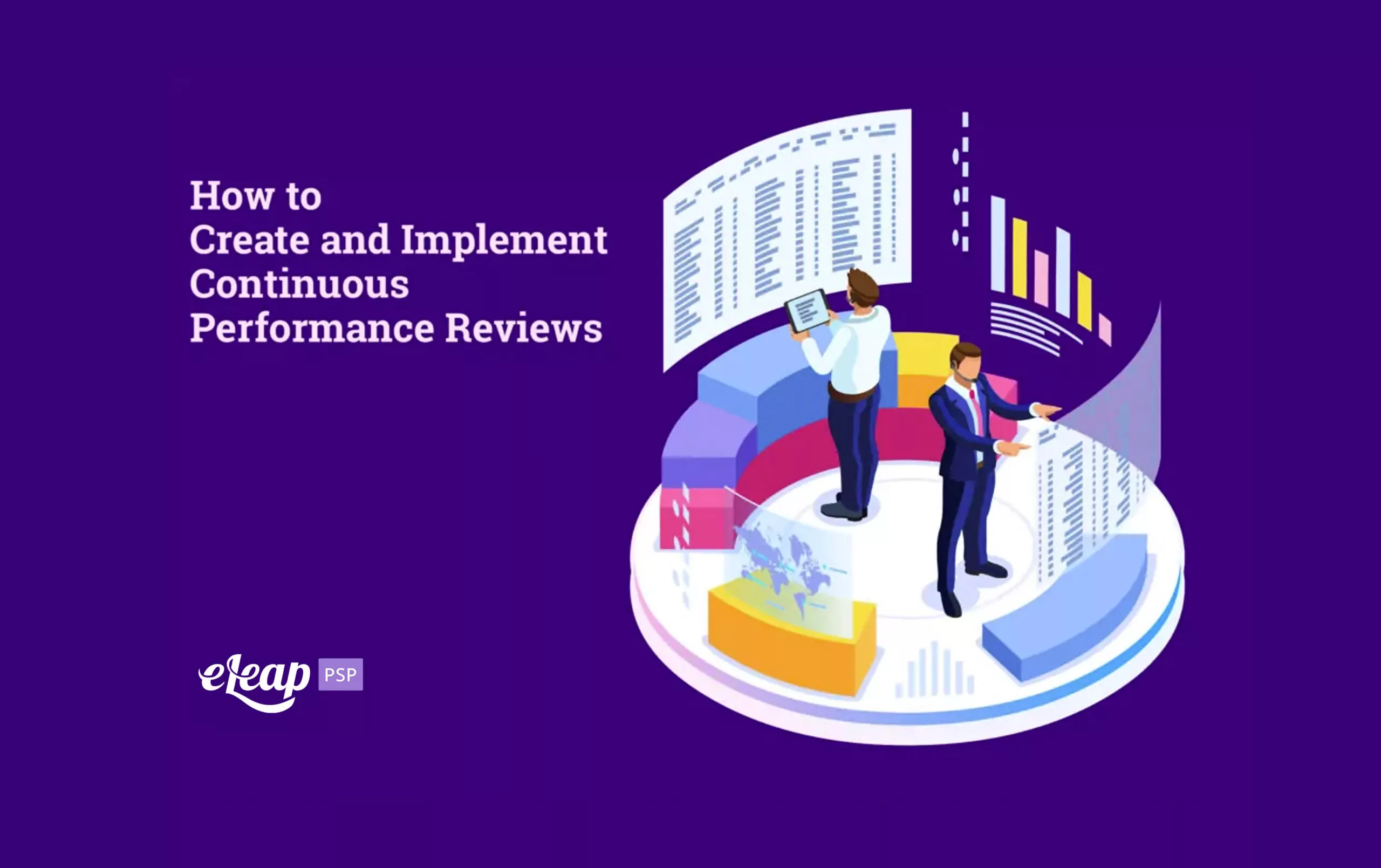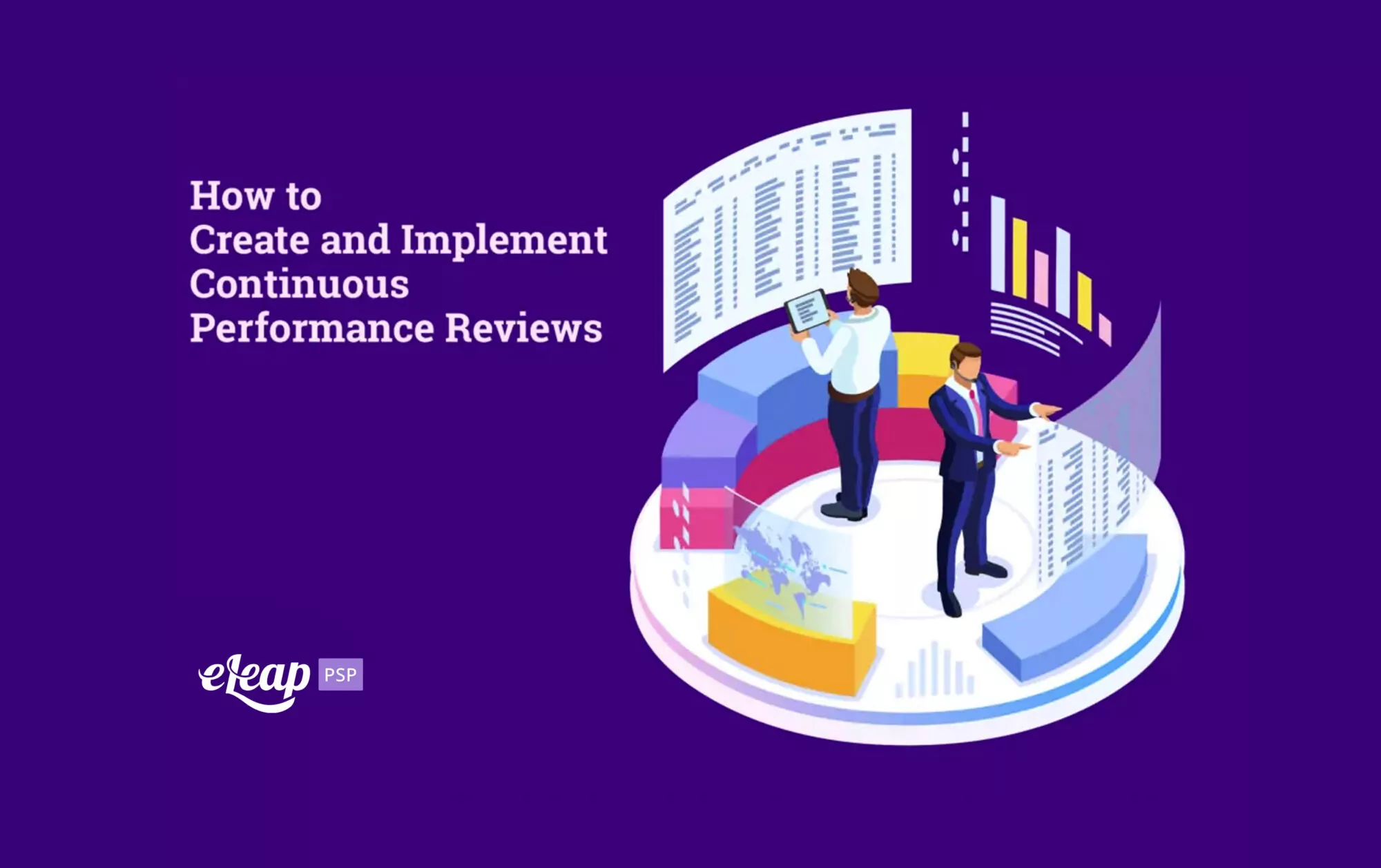How to Create and Implement Continuous Performance Reviews

Managers have tried every strategy in the book to boost performance and motivate employees. When punitive efforts failed, they turned to ratings and rankings. The thinking was that low ratings would shame employees into performing better or that low rankings would foster a sense of competition with other employees, increasing performance. Explore how eLeaP’s Performance Management Platform can simplify evaluations, boost productivity, and drive measurable results.
Neither of those things has occurred. Does that mean performance management is impossible? That it cannot be done?
The truth is that managers simply need better tools to help encourage employees to be their best selves. Continuous performance reviews tick all the boxes while simultaneously encouraging employees to new heights in terms of performance. For leaders struggling to understand how to create and implement these reviews, this guide will be helpful.

The Key to Understanding Why Ratings and Rankings Fail
On the surface, it seems like ratings and rankings would be effective motivators. After all, they provide a visual representation of an employee’s performance, clearly communicating where they fall on the spectrum. However, the truth is that they simply are not objective enough. They are inherently biased against employees, stacking the deck in the employer’s favor. Plus, they create an us versus them notion that simply isn’t true. Of course, this begs the question of what an objective, unbiased review system might look like and on what it might be based.
What Are Continuous Performance Reviews?
Continuous performance reviews are simply that – reviews delivered continuously. This rapid-fire delivery offers the ability to correct course in real-time, as well as the ability to deliver critical information in unbiased, actionable ways. They also differ from old-style performance reviews in a wide range of ways, including:
- Frequency – The “continuous” part here is of vital importance. How frequently should you be providing reviews, though? It varies from organization to organization and even from team to team. Ideally, course correction should be provided to individual employees on a weekly basis, but it should be done no less frequently than once per month.
- Directness and Brevity – Continuous performance reviews should be delivered in a one-to-one manner, and they should be kept brief. Often, you can take care of these in as few 15 minutes because they’re delivered so frequently.
- Actionable – Another big difference between these performance reviews and those of yesteryear is that they are fully actionable. Yes, there was a notion that old-style reviews were actionable, but the truth was that they were completely backward-facing. It’s impossible to act on insight given six months after an event occurs. With continuous performance reviews, insight can be provided within mere days in most cases.
Continuous Performance Reviews: Best Practices to Follow
While continuous performance reviews can deliver vital benefits for organizations and help employees develop and improve, best practices are essential to their effectiveness.
They Must Be Fair – Often, organizations tie performance to compensation. An employee may or may not receive a raise based on an arbitrary assessment of their performance over the past 12 months when actionable feedback was not provided. This is unfair, and it results in disengaged employees who cannot improve their performance. In fact, it becomes exponentially more likely that they will leave in search of another employer.
Continuous reviews must be completely fair. They should focus only on development and cannot be connected to compensation to avoid any perceived unfairness. The reviews themselves must also be fair in terms of how performance is gauged. It should be consistent across the organization and from review to review.
They Must Be Conversational – Formal performance reviews can be unnerving. They cause employees to close down rather than speak up. In contrast, continuous performance reviews should be informal and conversational in nature. This puts employees at ease, encourages them to share their thoughts honestly, and makes them more receptive to any information shared.
With that being said, continuous performance reviews cannot be meandering or unstructured. They should be relaxed but must follow a strategy that is designed to boost the employee’s awareness of their strengths (and to encourage them to develop those further through L&D), to create a sense of psychological safety where employees are empowered to innovate even if they fail and to help encourage the development of a growth mindset across the organization.
Keep It Objective – Finally, continuous performance reviews must be kept objective. Performance should be monitored throughout the entire year to ensure accuracy in feedback, and to help eliminate the natural tendency of managers to focus on “the most recent thing”. Often, this leads to employees with very good track records receiving negative reviews because of a recent occurrence that was at odds with overall performance.
If management cannot be objective and track performance over the course of the year, using that information to inform each review, then the problem may be systemic. It likely touches on an issue with the company’s culture and must be addressed first at the top to change the culture to something more positive.
Where Do Compensation Decisions Fit In?
If compensation should not be part of continuous performance reviews, where do those decisions fit in? They should be handled separately. Of course, employee performance certainly plays a role in compensation, but managers must make such decisions based on the most accurate picture of performance possible.
Without continuous performance reviews, that is difficult, if not impossible. It is much more likely that management will fall back on “the most recent thing,” which gives a skewed perspective of employee value and whether increased compensation is deserved.
Rinse and Repeat
Continuous performance reviews offer lots of potential. However, organizations cannot expect to see radical change overnight. It requires repetition, building it into the company’s culture, and making it a part of each person’s day-to-day experience. With time and dedication, though, these reviews can dramatically transform businesses, enabling an improved ability to compete while ensuring that key talent is not just retained but cultivated and developed to their fullest potential.